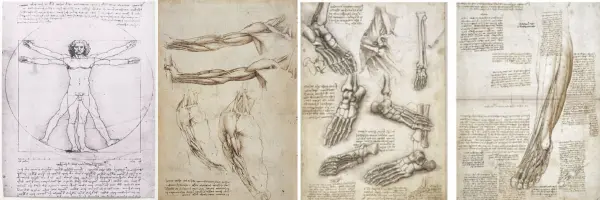
Leonardo da Vinci drawings reveal his incredible talent as both an artist and an inventor. He created detailed anatomy, mechanics, and nature studies that continue to captivate audiences today.
His ability to combine art and science in his drawings offers a unique perspective on the world. They demonstrate how he observed and understood the universe around him.
The collection includes famous works like the Vitruvian Man and studies of horses and machinery. These works showcase his mastery of human proportion and mechanical design. Explore this gallery of da Vinci’s drawings for an in-depth look at his art.
Leonardo’s curiosity and deep thinking led him to numerous innovations, which are visible in his sketches. His works are not just artistic masterpieces but a testament to his relentless quest for knowledge and exploration.
Biographical Context
Leonardo da Vinci was born on April 15, 1452, in Vinci, near Florence. He began training in the Florentine workshop of Andrea del Verrocchio, a prominent artist of the period. This background laid the foundation for his later artistic achievements, including his well-known drawings.
Leonardo produced numerous sketches during his career, capturing his keen observations of nature. These works ranged from anatomical studies to mechanical inventions. His sketches revealed his deep curiosity and innovative thinking, showcasing ideas ahead of his time.
Leonardo moved to Milan around 1482 and supported the Duke of Milan for many years. During this period, he created several famous drawings and paintings that reflect his artistic brilliance. He is known for works like The Last Supper and the Mona Lisa.
Leonardo da Vinci’s notebooks are filled with intricate diagrams and schematics covering flying machines and human anatomy. These sketches of inventions demonstrate his multifaceted genius and have influenced countless fields.
Leonardo’s interest in anatomy led to some of his most detailed figure drawings. His studies of the human body were pioneering, offering insights into muscle structure and movement. These works remain admired for their accuracy and thorough observation.
His drawings continue to inspire and are celebrated for their technical skill and imaginative vision. Many of his drawings are now valuable art pieces, highlighting his significance as an artist and thinker throughout history.
Da Vinci Drawings: Anatomical Studies
Leonardo da Vinci’s anatomical drawings reveal his profound human body exploration. His work combines art and science, illustrating intricate details of human anatomy.
Vitruvian Man
The famous Vitruvian Man is perhaps Leonardo’s most recognized anatomical drawing. According to ancient Roman architect Vitruvius, it represents the ideal proportions of the human body.
This drawing shows Leonardo’s understanding of symmetry, geometry, and the connection between art and nature. It depicts a male figure in two superimposed positions, with his arms and legs apart within a circle and square, capturing the essence of human proportion and balance.
Studies of Musculature
Leonardo’s studies of musculature demonstrate his fascination with how muscles move and support the body. He meticulously detailed muscles in action, observing them through dissections.
His drawings, like those of musculature, often included notes, showing his understanding of anatomy and motion. These sketches reveal muscle tension and relaxation, allowing viewers to see the underlying mechanics of human movement, a pursuit that defined his anatomical artwork.
Skeletal Sketches
Da Vinci’s sketches of bones show his thorough understanding of the human framework. He illustrated the skeletal structure with exceptional detail, exploring each bone’s function.
His skeletal sketches revealed the harmony between bones and muscles. These studies were unique for their time and showcased his interest in how bones supported posture and movement. The insights gained from these sketches contributed significantly to his painting techniques.
Comparative Anatomy
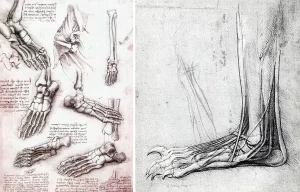
Leonardo’s drawing of the human Foot (left) and the Bear Paw (Right)
Leonardo’s comparative studies often involved contrasting human and animal anatomy. He detailed various creatures to understand their anatomical similarities and differences, which aided his comprehension of human physiology.
Leonardo identified features that crossed species in his comparative anatomy drawings, broadening his perspective on biological form and function, visualizing the evolutionary links between diverse living organisms, and enriching his anatomical study.
Mechanical Ingenuity
Leonardo da Vinci’s drawings revealed his deep fascination with mechanics, often exploring concepts far ahead of his time. His work captured his visions for human flight, innovations in warfare, and engineering marvels.
Flying Machines
Leonardo da Vinci’s sketches of flying machines are some of his most iconic works. Among these are designs such as the ornithopter, inspired by bird flight. This machine featured flapped wings, resembling a bird in motion.
He also designed an aerial screw, an early concept resembling a helicopter. Despite the materials’ limitations during his time, da Vinci’s detailed blueprints highlighted his understanding of aerodynamics and mechanics. His work laid the groundwork for future aviation inventions.
War Machines
In the realm of military innovation, da Vinci created designs that showcased his strategic mind. He sketched an armored vehicle, often called the first tank, designed to be mobile and protective. This machine was intended to intimidate and safely advance into enemy lines.
Another notable invention was his giant crossbow, which was intended to launch massive projectiles. These sketches revealed da Vinci’s blend of creativity and practicality, emphasizing effectiveness and intimidation on the battlefield.
Engineering Designs
Leonardo’s engineering designs included a wide range of practical machines. One significant contribution was his work on water-lifting devices, which included sketches exploring innovative methods for moving and elevating water efficiently.
His studies also involved intricate gear systems, which leveraged his deep interest in mechanical movement and potential applications in various industrial processes. The detailed da Vinci schematics reflect his remarkable ability to foresee modern mechanical engineering solutions.
Artistic Techniques
Leonardo da Vinci employed several notable techniques in his drawings, enhancing depth, realism, and emotion. His mastery of light, shadow, and perspective revolutionized the art world and continues influencing artists today.
Chiaroscuro
Leonardo da Vinci’s use of chiaroscuro was groundbreaking. This technique contrasts light and dark, creating a sense of volume and three-dimensionality. It allowed da Vinci to bring his sketches to life, adding depth to the simplest forms.
He could emphasize realism in works like his famous drawings by balancing shadows and highlights. With chiaroscuro, Leonardo managed subtle transitions from light to dark, enhancing the emotional impact of his figures and compositions.
Sfumato
Sfumato is another critical technique Leonardo employs. The soft blending of colors and tones characterizes it. This approach allowed him to achieve a smoky effect, softening edges and creating atmospheric depth.
Leonardo’s sfumato is evident in his portraits, where the delicate transitions between light and shadow add an ethereal quality. His portrait sketches display a mastery of this technique, allowing for a naturalistic portrayal of human skin and capturing a lifelike essence. Sfumato contributes to the nuanced expressions found in works like the Mona Lisa.
Perspective Studies
Leonardo da Vinci made significant advancements in his studies of perspective. He meticulously researched how to represent three-dimensional space on a flat surface.
His careful observations led to precise proportion and scale in his sketches and blueprints, particularly evident in the detailed plans for his inventions.
Leonardo’s exploration of perspective in drawings allowed for realistic depth and proportion in his architectural renderings. This profound understanding of perspective shapes art’s perception of depth and space.
Collaborations and Influence
Leonardo da Vinci’s collaborations significantly shaped his art, and his influence on his contemporaries and future generations was profound. His partnership with Andrea del Verrocchio and his distinct style left an indelible mark on art history.
Work with Verrocchio
Leonardo da Vinci began his artistic journey in the workshop of Andrea del Verrocchio in Florence. This experience profoundly shaped his skills. Working with Verrocchio, Leonardo contributed to pieces like “The Baptism of Christ,” where his work on the angel figure highlighted his talent.
Leonardo’s early exposure to Verrocchio’s techniques and teachings helped develop his unique approach to art. His ability to capture light and human anatomy in detail set his work apart. This foundation established Leonardo’s path toward creating his legendary sketches and inventions.
Impact on Contemporaries
Leonardo’s contemporaries recognized his talents and often sought his insights. Like the acclaimed Vitruvian Man, his drawings and sketches explored human proportions and anatomy with unmatched precision.
These works inspired other artists and thinkers of his time to explore the relationship between art and science.
Leonardo’s pursuit of anatomical accuracy influenced figures such as Michelangelo and Raphael. His emphasis on capturing the human body’s complexity set a new standard in Renaissance art. Admired for both his technical skill and innovative spirit, Leonardo’s work resonated throughout the artistic community.
Legacy in Art History
Leonardo’s legacy extends well beyond his lifetime. His sketches and drawings, particularly those of inventions and flying machines, became a cornerstone in art history.
These works demonstrate how he merged scientific curiosity with artistic expression, influencing modern engineering and design.
His renowned drawings of anatomical studies continue to be pivotal in understanding human anatomy.
Leonardo da Vinci’s remarkable skill in creating detailed and lifelike drawings has inspired artists for centuries.
His legacy endures through exhibitions and countless references in both art and science, securing his place as a true master.
Notable Collections
Leonardo da Vinci’s drawings are in some of the world’s most prestigious collections. Each has unique pieces that showcase his genius and the breadth of his work.
Royal Collection at Windsor
The Royal Collection at Windsor holds nearly 600 drawings by Leonardo da Vinci. These works are renowned for their meticulous detail and range of subjects, reflecting Leonardo’s diverse interests from anatomy to invention.
Charles II acquired these drawings in the 17th century. They were once bound in a single album. The anatomical sketches are particularly significant, demonstrating Leonardo’s precise observations and understanding of the human body.
This collection highlights Leonardo’s artistic skills and scientific pursuits, making it a crucial resource for studying his multifaceted talents.
Louvre Museum
The Louvre Museum hosts many of Leonardo’s works, including paintings and drawings.
While the museum is famous for housing the Mona Lisa, it also contains notable drawings, such as the studies for “The Last Supper.”
These sketches offer insights into Leonardo’s creative process and compositional approach. They reflect his ability to manipulate light and shadow to create depth and realism.
The drawings serve as preliminary versions, capturing early ideas and adjustments that Leonardo considered when developing his masterpieces.
Vatican Libraries
The Vatican Libraries preserve some remarkable sheets of Leonardo da Vinci’s work, particularly his scientific and technical drawings.
These include sketches of inventions and studies of hydrodynamics, which reveal his innovative thinking.
His curiosity about engineering and nature is evident in these collections.
The detailed renditions show Leonardo’s forward-thinking ideas, such as earlier concepts resembling helicopters and other flying machines.
This collection underscores Leonardo’s role as an artist, inventor, and thinker, making him one of history’s most versatile figures.
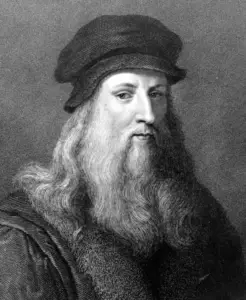
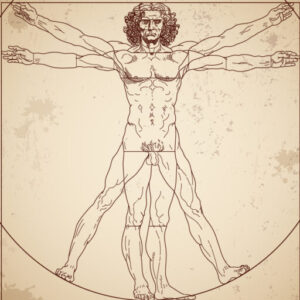
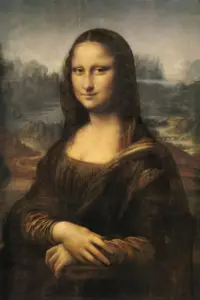

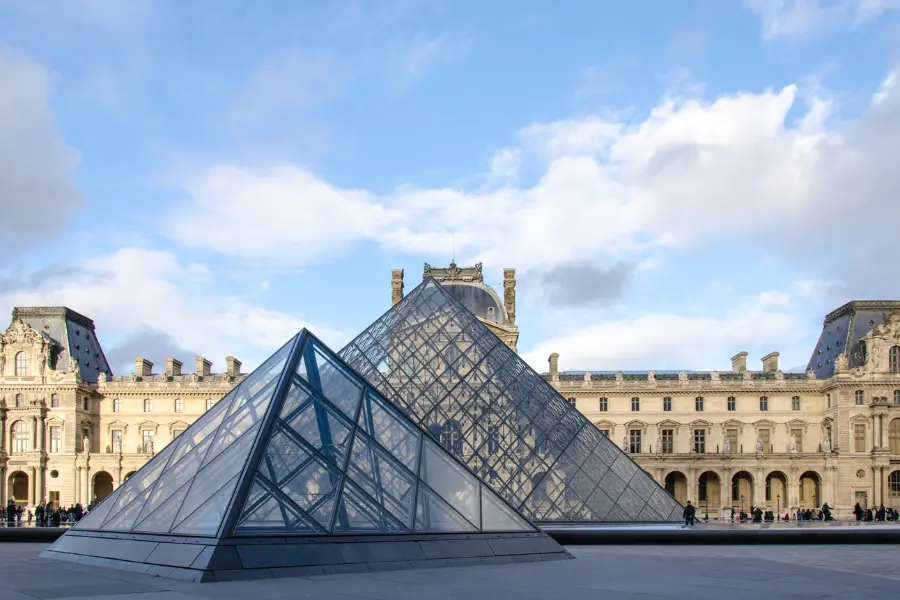
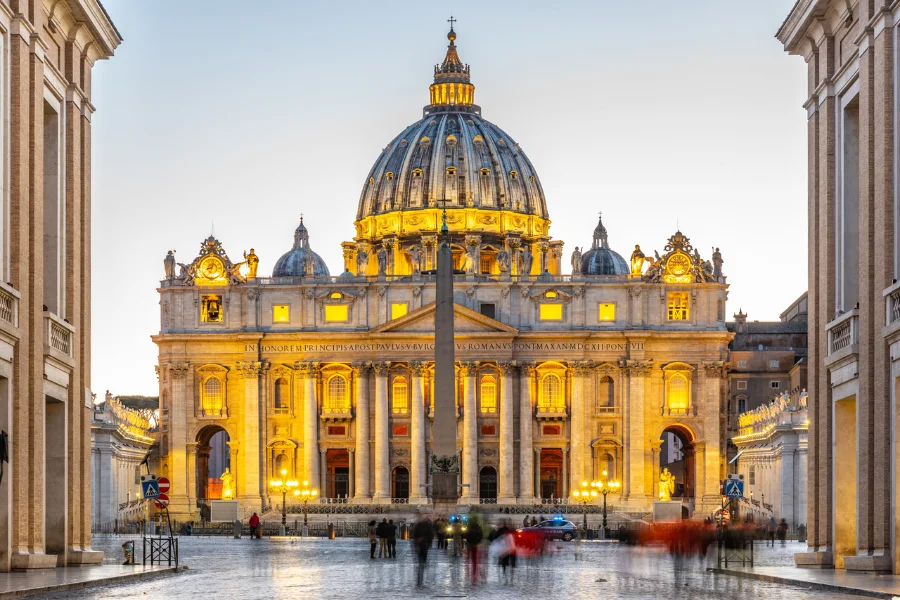
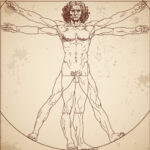
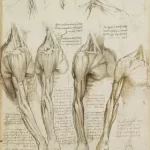
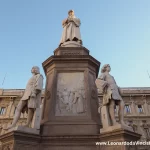
 Leonardo Bianchi,
the creator of Leonardo da Vinci's Inventions.
Thank you for visiting
Leonardo Bianchi,
the creator of Leonardo da Vinci's Inventions.
Thank you for visiting